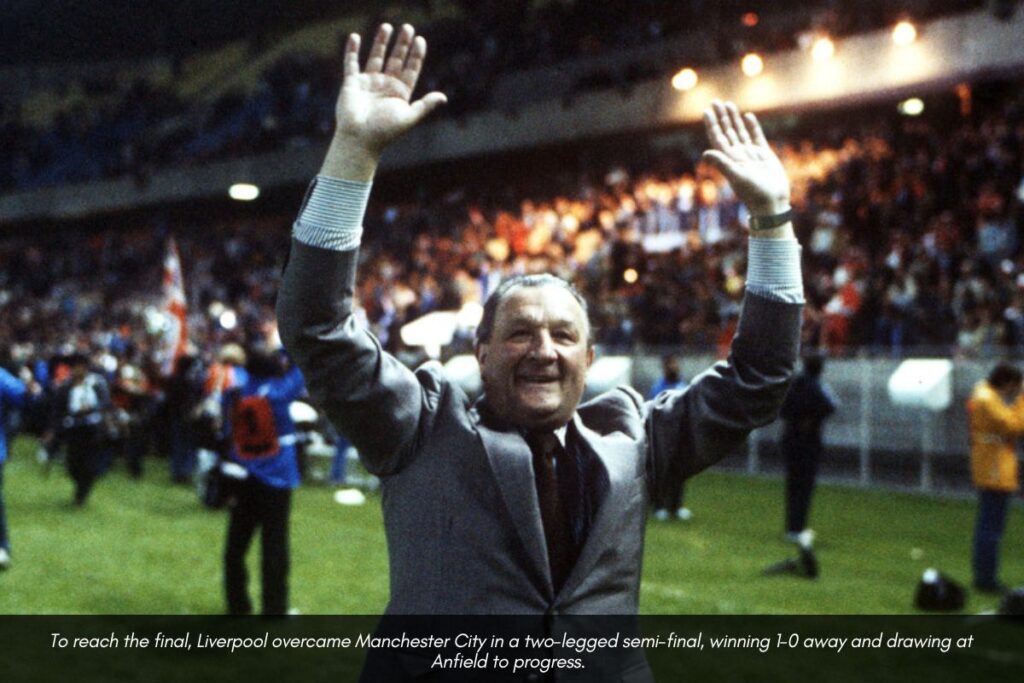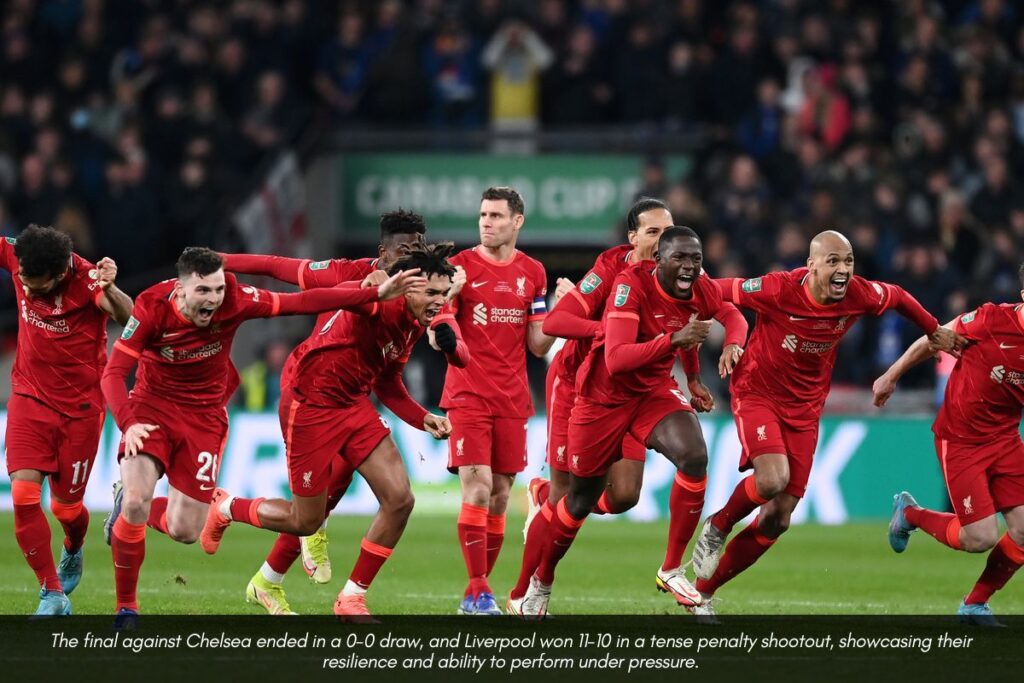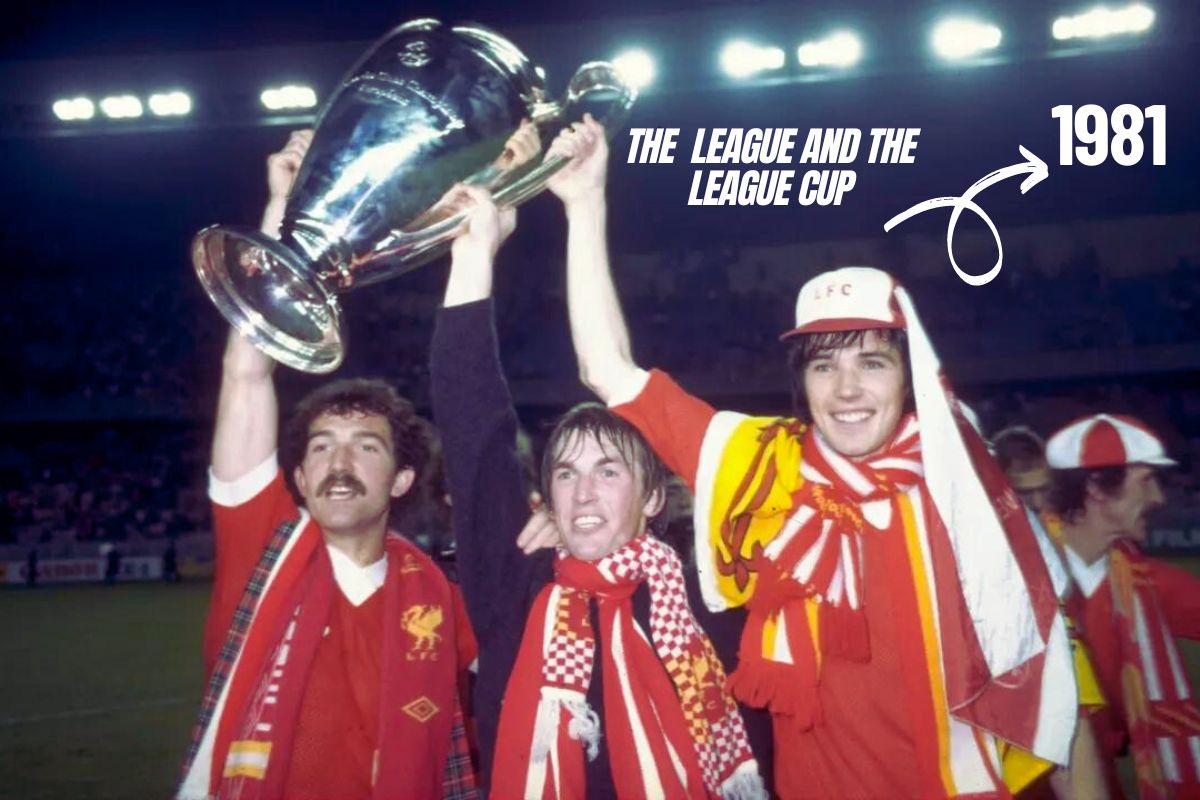The 1981-82 season marked Liverpool’s 90th year since their establishment. It was a successful campaign, with the team winning both the League Championship and the League Cup. However, their performance was less impressive in other competitions. They reached the fifth round of the FA Cup and were eliminated in the quarter-finals of the European Cup.
Liverpool won their first League Cup after a replay against West Ham United. Following a goalless 90 minutes at Wembley, Alan Kennedy scored late in extra time, but Ray Stewart equalized for the Hammers with a penalty, forcing a replay at Villa Park. West Ham took an early lead through Paul Goddard, but Kenny Dalglish equalized before Alan Hansen’s 28th-minute header secured a 2-1 victory for Liverpool. To reach the final, Liverpool overcame Manchester City in a two-legged semi-final, winning 1-0 away and drawing at Anfield to progress.
Blend of Fresh Talent of 1981-82 Season
The 1981-82 season was pivotal for Liverpool, featuring significant transitions within the squad. This era saw the infusion of new talent that would carry the club’s legacy of success well into the decade. Key players like Bruce Grobbelaar, Mark Lawrenson, Ian Rush, Ronnie Whelan, and Craig Johnston emerged, blending seamlessly with the seasoned veterans. Their arrival signaled the start of a new chapter, ensuring the team remained formidable in English and European football.
Bruce Grobbelaar, a dynamic goalkeeper known for his agility and eccentric style, took his place between the posts alongside Steve Ogrizovic. The defense was fortified by the presence of Alan Kennedy, a reliable left-back, and Mark Lawrenson, who quickly established himself as a versatile and dependable defender. Phil Thompson, Phil Neal, and Richard Money provided experience and stability, while Alan Hansen’s composure and ball-playing skills further strengthened the backline.

In midfield, the creative flair of Craig Johnston and the emerging talent of Kevin Sheedy offered fresh attacking options. Graeme Souness, the team captain, was the heartbeat of the midfield with his leadership and tenacity. Ronnie Whelan’s arrival added dynamism and energy, complementing the established presence of Terry McDermott, Sammy Lee, Ray Kennedy, and the versatile Steve Nicol.
Up front, Liverpool’s attacking prowess was bolstered by the emergence of Ian Rush, whose goal-scoring exploits would become legendary. He was supported by the likes of David Fairclough, known for his super-sub heroics, and the experienced Kenny Dalglish, whose vision and skill made him a pivotal figure. David Johnson and Howard Gayle provided additional options in attack, ensuring the team had depth and versatility. This blend of fresh talent and seasoned expertise laid the foundation for Liverpool’s continued dominance, ensuring that the club remained at the pinnacle of football throughout the 1980s. Below is a detailed list of the Red’s squad in the 1981-82 season.
The Squad
Goalkeepers: #1981-82 season
- Steve Ogrizovic (England) – A reliable backup goalkeeper, Ogrizovic provided solid support and competition for the starting position.
- Bruce Grobbelaar (Zimbabwe) – Known for his agility and eccentric style, Grobbelaar became the first-choice goalkeeper, bringing flair and stability to the team’s defense.
Defenders: #1981-82 season
- Phil Neal (England) – A dependable right-back known for his consistency and leadership on the field.
- Alan Hansen (Scotland) – A composed center-back with excellent ball-playing skills, crucial for building attacks from the back.
- Phil Thompson (England) – An experienced central defender and captain, providing leadership and defensive solidity.
- Alan Kennedy (England) – A reliable left-back who contributed both defensively and offensively, known for his crucial goals in key matches.
- Richard Money (England) – A versatile defender, offering valuable depth and cover in the defensive line.
- Mark Lawrenson (Republic of Ireland) – A versatile defender capable of playing in multiple positions, adding flexibility and strength to the defense.
Midfielders: #1981-82 season
- Craig Johnston (England) – A dynamic midfielder known for his creativity and attacking flair, capable of changing the game’s tempo.
- Sammy Lee (England) – A hardworking and energetic midfielder, providing both defensive support and attacking drive.
- Ray Kennedy (England) – A versatile and experienced midfielder, known for his vision and ability to contribute to both defense and attack.
- Terry McDermott (England) – A key playmaker, known for his passing ability and knack for scoring crucial goals.
- Kevin Sheedy (Republic of Ireland) – A skillful winger with excellent crossing ability and set-piece proficiency.
- Graeme Souness (Scotland) – The team’s captain and midfield enforcer, known for his leadership, tough tackling, and ability to dictate the pace of the game.
- Ronnie Whelan (Republic of Ireland) – An energetic midfielder known for his versatility, work rate, and knack for scoring important goals.
- Steve Nicol (Scotland) – A versatile player capable of playing in multiple positions, known for his adaptability and consistency.
Attackers: #1981-82 season
- David Fairclough (England) – Known as a super-sub, Fairclough was famous for his ability to score crucial goals off the bench.
- Kenny Dalglish (Scotland) – A legendary forward with exceptional vision and technical skill, pivotal in linking the midfield and attack.
- Howard Gayle (England) – A pacey forward providing additional attacking options and depth.
- David Johnson (England) – An experienced striker known for his goal-scoring ability and versatility in the forward line.
- Ian Rush (Wales) – An emerging goal-scoring sensation, Rush’s clinical finishing made him a key figure in the attack.
Liverpool’s League Cup Triumphs Post-1981-82 season
After securing their first League Cup in 1981-82 season, Liverpool Football Club continued to demonstrate their dominance in the competition, amassing a series of victories that highlighted their consistent excellence in English football. The immediate success following their initial triumph came in the 1981-82 season. Liverpool successfully defended their title by overcoming Tottenham Hotspur in the final, winning 3-1 at Wembley Stadium. This victory marked the beginning of an extraordinary era for the club in the League Cup.
Liverpool’s prowess in the competition was further solidified in the 1982-83 season when they claimed their third consecutive League Cup. In a hard-fought final against Manchester United, Liverpool emerged victorious with a 2-1 win. The following year, they achieved an unprecedented fourth successive League Cup triumph. The 1983-84 final saw Liverpool face their local rivals, Everton. After the initial match ended in a draw, Liverpool secured a 1-0 victory in the replay, showcasing their resilience and ability to perform under pressure.

After a brief hiatus, Liverpool returned to League Cup glory in the 1994-95 season. In a memorable final against Bolton Wanderers, Liverpool secured a 2-1 victory, adding another trophy to their illustrious history. The turn of the millennium saw Liverpool lift the League Cup again in the 2000-01 season. The final against Birmingham City was a thrilling encounter that ended in a 1-1 draw. Liverpool triumphed 5-4 in the penalty shootout, demonstrating their composure in high-stakes situations.
The 2002-03 season witnessed another League Cup triumph for Liverpool. In the final, they faced Manchester United and secured a convincing 2-0 victory, reinforcing their reputation as a formidable force in English football. Nearly a decade later, in the 2011-12 season, Liverpool once again lifted the League Cup. In a dramatic final against Cardiff City, the match ended in a 2-2 draw, and Liverpool emerged victorious with a 3-2 win in the penalty shootout. Most recently, in the 2021-22 season, Liverpool added another League Cup to their collection. The final against Chelsea ended in a 0-0 draw, and Liverpool won 11-10 in a tense penalty shootout, showcasing their resilience and ability to perform under pressure.
Conclusion
Liverpool’s 1981-82 season League Cup triumphs illustrated their excellence and resilience in English football. Each victory contributed to the club’s rich history, reinforcing their status as a powerhouse in domestic competitions. Looking ahead, our next article will delve into Liverpool’s remarkable achievement of securing the League, League Cup, and European Cup in the 1983-84 season, marking their first historic treble. This unprecedented success not only showcased Liverpool’s dominance but also set a new benchmark for footballing excellence. Would you like to explore more on the 1981-82 season?
Read all other posts on the 1981-82 season
Find the Latest News on Player Ratings | Transfers | Prematch | Postmatch
Stay tuned for more updates on Liverpool FC Times and Stories. Your thoughts are always welcome in the comments section. Thank you for your continued support!
YNWA (You’ll Never Walk Alone)!
The Liverpool FC Times Team
LiverpoolFCTimes.com
